
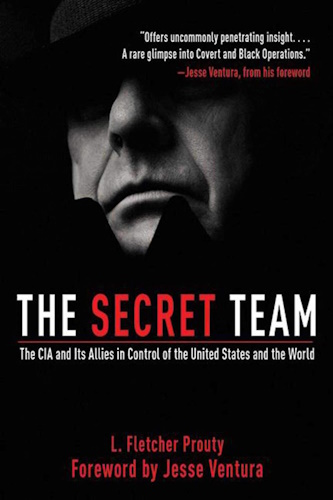
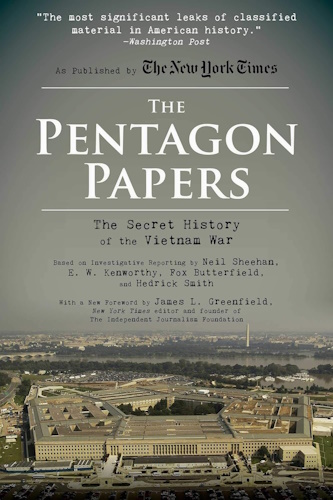

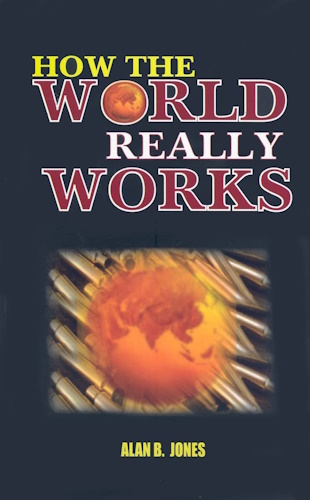

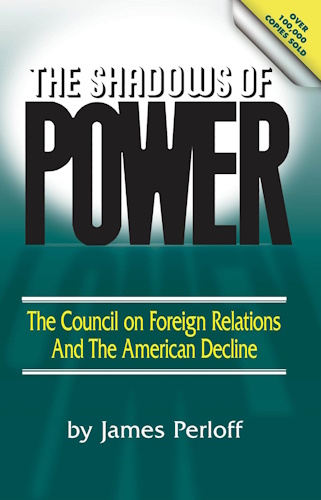

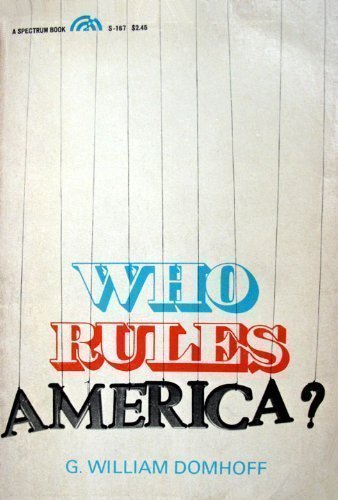

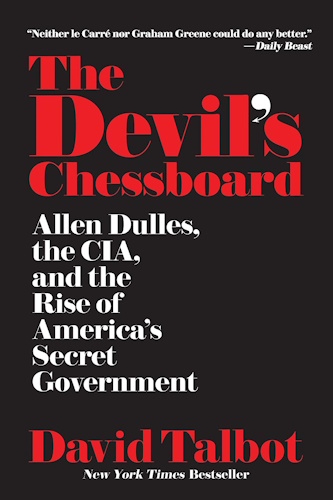
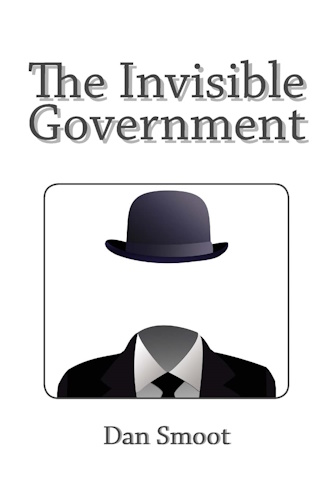

![]()
![]()
PART III
THE CIA: HOW IT IS ORGANIZED
Chapter 15
Logistics by Miracle
Historians attribute to Napoleon the statement that armies move on their stomachs. In actual practice, it may have worked the other way around. The army's stomach may have been what made the General move. When the great Genghis Khan captured and pillaged a city, his army ate well for a while. However, when the food began to run low Genghis Khan was already looking for the next city to capture. Historians may attribute his conquests to a vast imperial effort; but objective analysis may reveal his sweeping across the cold and hostile land-mass of Asia was due more to the need to feed the growing horde of men behind him than to any other one incontestable factor.
It is logistics that permits armies to move. When the British Army sat at El Alamein holding the Rommel advance at bay, their failure to attack was more a function of logistics than it was of tactics. Montgomery and his great assistant, Alexander, knew all too well that once the army moved, it would be absolutely dependent upon a flow of supplies that must remain unbroken all the way to Tunis. They were not about to give the order to move until that flow of supplies was assured.
When Patton broke out across the fields of France in his dash for the Rhine and the destruction of the German armies, his fate lay in the hands of General J. C. H. Lee, Eisenhower's logistics chief, more than it did in his tactical wizardry.
And so it has been with the CIA. The important thing about the logistics system of the Agency is not that it has so much and that it can do almost anything it wants with its horn of plenty; but that it has achieved this position without specific authorization and quite generally without the knowledge and approval of the rest of the Government, especially Congress. The ultimate control over any agency of the Government lies in the purse-strings that are held by Congress. Yet the Agency grows and grows, and Congress seems to have little to do with it and to know little of what it has created. Of course, everyone knows that the CIA has a fleet of aircraft, tens of thousands of people, ships and trucks, overseas facilities, weapons of all types in vast quantities, and almost limitless funds. Almost anyone, especially any member of Congress can say, "I certainly am aware of the fact that the CIA has secret overseas facilities." And another can say, "I know that the CIA is mixed up with Air America, the contract carrier airline, in some manner or other." Another might add, "I have visited overseas capitals and I have found that the CIA had a number of people there under cover assignments." And some other Congressman might even say that he has heard that the Agency gets plenty of money through various secret channels from other Government sources.
The Agency likes to conceal the fact that it has so much under heavy security wraps. Whether these facts are concealed for real security reasons, or whether they are concealed simply to keep them from the eyes and ears of Congress and of the American public is the big question. Actually, the CIA prefers to keep its wealth under security so that all Americans, including the members of Congress, do not know how much it has and how it got it. There is a very good chance that the other nations of this world have a much better idea of what the CIA has in their countries than we do in this country. They make it their business to know, and we do not. We have just let it happen before our eyes without ever making a real investigation of the facts. If everyone else in the world knows, why shouldn't we? If Greece is the locale of one stockpile and they know what is in it; and if Turkey, Iran, and Jordan all have stockpiles in their countries and know what they contain and where they are, what makes someone here think that they do not talk to each other and compare notes? As a matter of fact, they not only compare notes, they use each other's knowledge to improve their own game. The only ones who don't know what the CIA has in Greece, Turkey, Iran, and Jordan are the American people and their representatives in Congress.
And for all those Congressmen who know about the Agency, there are none who can say that they know all of the things the Agency has of all kinds. Each Congressman may have a smattering of knowledge of some of the things that the Agency has. But the CIA has achieved this vast wealth in manpower, money, and materials, as well as facilities all over the world, without the knowledge of the rest of the Government. This means that the rest of the Government does not know about it in total -- all in one place, as in Congress.
Undoubtedly, someone from the CIA and perhaps from the executive branch of the Government may say, "That is not exactly right. We are fully aware of the total inventory of the Agency. We are aware of its manpower resources and of its goods all over the world, and we have an inventory of its facilities and installations, including those in foreign countries." Certainly, there is no need to doubt or to question such a blanket statement of faith. Somewhere there must be a fairly accurate total of what the CIA is supposed to have; but at that point one will be confronted with the tautology, "This inventory of the Agency lists everything the Agency has; therefore, everything that the Agency has is listed in this inventory."
For the CIA, the idea of property takes on a new meaning. Any other agency of the Government that wanted to use one hundred trucks would have to buy one hundred trucks or make some arrangement with another agency of the Government, or with a private organization, to acquire the trucks. And that agency would have to show in its budget the expenditure of a certain amount of its funds for the purchase or lease of the hundred trucks. In other words, its utilization or ownership of property could be verified and accounted for by reviewing or auditing its appropriated funds. The CIA can use and the CIA can acquire and "own" one hundred trucks without any budgeted fund transaction at all.
The CIA has the authority, or at least it is given the authority by other Government agencies, to create cover organization within other parts of the Government. This is one of the key tasks that the old Dulles-Jackson-Correa report set out for the Agency. Having once created such units, the CIA is then able to use those units as though they were real elements of the covering organization and to do with them pretty much what it pleases. So if the CIA wants to use one hundred Army trucks, it may have one of its Air Force cover units (it could use an Army unit; but it is easier to use cross-service channels to conceal such a transaction) duly and properly requisition the trucks. In response to this order, the Army will furnish, and write off, the trucks to the Air Force. However, the Air Force won't really know that one of its units, a cover unit, has acquired these trucks; so the Air Force will not pick them up on its inventory. The trucks are then in a sort of never-never land. They are "owned" by an Air Force cover unit that the CIA has the authority to direct, and those trucks will be used as the CIA wishes and for as long as the CIA wishes. There have been cases where the CIA turned around and transferred such property to another country in a sort of a CIA-MAP project all of its own.
In this manner, only one of numerous variations, the Agency has acquired countless mountains of material, which it stockpiles, uses, loses, gives away, and just plain warehouses all over the world. Even the Agency doesn't know what it all is and where it all is. No one in the Government really knows how much the Agency has. A corollary of this statement is that the Agency has been able to stockpile money in a somewhat similar manner, because if it had money to buy trucks and then was never billed for them, it still has those funds to spend elsewhere.
With these funds that the CIA has stockpiled for its own use, it develops areas beyond those in the realm of the military and other regular branches of the Government. The Agency has a wonderful little shop called "TSS". Few know what TSS really means; but it probably means something like "Top Secret Stuff". This shop makes all kinds of James Bond trinkets. It is the place where they design briefcases that will not burn, that will blow up if someone attempts to open them the wrong way, and that will put out long spidery legs if they are released by the agent who is carrying them. And it is the shop that puts a full-blown tape recorder into a Zippo lighter case or a ladys lip-rouge container.
The TSS shop works on all kinds of unusual and very special weapons, and it works with chemicals that can perform all manner of special tasks. It has the finest bugging devices available and the very best debugging facilities. TSS goes out into industry and has things made without telling the people who have made them what their uses will be. At one time for photographic purposes the Agency wanted to develop a brilliant floodlight that could be carried on the wing-tip of an airplane in a pod. This light required so much energy to operate it that the normal electrical supply of the aircraft could not ignite it properly. The Agency then developed, with the help of a private corporation, a generator driven by a propeller attached to the pod. This small propeller was so efficient that it could drive a generator for the floodlight to illuminate an entire area below the plane.
Although this was a splendid development, it was found that in a tactical situation the worst thing you could do was to send a plane into a hostile situation lit up like the sun. This would be an easy target for ground gunners. The next step was to synchronize the light and the camera shutter to the point that the flash would be so brilliant and so brief that an unwitting ground party would not realize it had blinked.
This created new problems; a whole new automated photographic and lighting system had to be developed. This was done, and Agency aircraft can now approach targets in the dark, even at times in an engine-out or engine-idling glide for silence, and take high-speed pictures without anyone on the ground knowing that they have been photographed. TSS was also able to make another advance in aerial photography. The U-2 had proved that it could fly across denied or unwitting territory without notice or without danger from attack because of its speed, altitude, and range. It was also a relatively small radar target. However, at the flight altitude at which the U-2 operated, any normal aerial camera was being pushed to its limits. The camera lens had to focus on the target area and put what it saw on film as precisely as possible. At some point the lens became better than the film paper. This meant that the image that the lens put on the paper was finer than the grade and grain of the paper. Therefore the process of enlarging such pictures and then enlarging them again and again became limited, not because the lens could not accurately transmit the image but because the paper itself had a grain structure that began to break down the detail after a certain amount of enlargement. By working on this problem, TSS and its corporate research associates were able to create a means by which enlargement could be carried so far, for example, that it could distinguish between an oval table or a roundtable of about four feet in diameter from the operational altitude of the U-2, or even higher.
This became a most useful facility in the days of the U-2; but it had not reached the zenith of its utility until the Agency went into space. Now the Spy-in-the-Sky orbital laboratories park out in space at about 110 miles mean altitude and take very valuable pictures of the earth's surface on predetermined schedules or on signals. For example, such pictures of the Chinese atomic energy facilities clearly delineate between dry drying flats and moist drying flats. The continuing variations give a fairly accurate estimate of the rate of activity at the facility.
These developments have led to policy problems that this country has not faced up to primarily because so few people really know about them. They are hardly secret from our enemies, and for that matter they are not secrets from our friends. They are the kind of secrets we keep from ourselves in order that secret operations may be continued in the hands of the ST. For example, Secretary of Defense Laird has made a strong case before the Congress on behalf of the development of the B-l supersonic bomber, which the U.S. Air Force states it will need for the defense of the country in the decade of the eighties. As a function of his presentation to Congress, Mr. Laird gave information about a Soviet supersonic bomber, which he said had already been built and flown. As a result of the impact of this information, he drew the conclusion that the United States must get on with a project to build a bomber that would be equal to or even better than the Soviet bomber. In support of what he had been saying about the Soviet bomber he gave sufficient details of that new plane to artists to permit them to arrive at a suitable pictorial representation of it. A copy of this artists' conception of the Soviet bomber appeared in an issue of Time magazine and was used in that periodical as the basis for a strong article in support of a crash program to build an American supersonic bomber without delay. This whole process, which most Americans will recognize as a familiar pattern used for submarines, super-carriers, and for missiles, is intended to make everyone believe that we are behind the Russians and that we must catch up; we must close the bomber gap.
To the tune of an opening request for $11 billion, Congress is supposed to vote for production of this bomber based on the information given in limited fashion and upon a poor picture of an alleged flying aircraft. When the stakes are so high and so costly, it is time that the intelligence community and the DOD give up this facade of secrecy. Everyone knows that the intelligence community uses cameras of great ability and that they use orbiting laboratories from which photographic canisters are dropped for recovery and development. And everyone knows that these orbiting laboratories take pictures of Soviet territory and of any other territory desired. None of these things would be done if the pictures were not excellent and if they were not getting an excellent product. Therefore, if the intelligence community has hard information about a bomber, which includes photographs of that bomber, why should it not show the actual pictures of that bomber to Mr. Laird, to the President, to the Congress, and most of all to the American public and to the whole world? What possible case can be made for keeping such things secret, especially when they are asking for $11 billion? Is the reason they do not show these pictures to Congress the fact that they do not have these pictures? And if they do not have the pictures, why not? Is it because they have been unable to find the bomber and to get a picture of it outside its hangar? Or perhaps their conjecture about the bomber is a bit premature, and the bomber is perhaps only on the Soviet drawing-boards, like too many American bombers?
Of course, there are technical problems. An orbiting photographic laboratory can only take a useful picture of such a bomber at certain optimum times in its orbiting periodic cycles. And an orbiting lab can be tracked by the Soviets, and they can hide the bomber whenever they know a satellite, suspected of being a photographic type, is due to fly by. But, by the same token, there are tactical things the intelligence community can and should be doing to get such pictures anyhow. They are not established to get second-best pictures or none at all. If the long ears of electronic intelligence and of other sensors tell us that the Russians are flying a new supersonic bomber, then there are other ways of getting its picture and of getting so much concrete information about it that we do not have to depend upon incomplete data. This is what an intelligence agency should be for, instead of a lot of other things that it would rather be for.
Such frankness openly discussed and openly aired would give up nothing to our enemies and would in the long run improve the total program. It would be most helpful and it would save billions of dollars. However, so many of these things that the wonders of U.S. industrial capability have developed for the CIA and for its TSS, have been kept under wraps -- not so much because some form of security has been established that makes this reasonable and correct, but because the security shield leaves room for maneuvering when the ST needs to create a story that intelligence, for the time being perhaps, cannot actually support. Furthermore, if the huge spy satellite program were to be brought out in the open as a routine technical achievement, which it is, it might better be operated by NASA or one of the services than by an element of the intelligence community.
Much could be said for the merits of the TSS side of the Agency. The ability of the intelligence community to develop truly remarkable equipment and to extend the reach of surveillance and knowledge has been really magnificent. However, just as one would like to commend the community for having done something well, one realizes that the human factor has crept back in and beclouded the issue again by throwing up artificial barriers about these developments and by keeping them under wraps so that the controlling members of the "big game" may be able at one time or another to spring facts as surprises and at other times to spring surprises with or without the facts; and no one anywhere will be in a position to know otherwise, including, as President Truman has said, the very President and Commander in Chief.
What is so miraculous about the Agency's logistics system is that it has grown to such tremendous proportions in spite of the fact that the NSC directives specifically stated that the CIA should not have the men, money, or materials to pursue operations unless and until the CIA had been directed to carry them out by the NSC in the first place. During the early nineteen fifties, the Council was in the process of issuing a directive revision and an updating of the old NSCID 10/2 -- which would authorize the CIA to carry out special operations when directed by the NSC. A copy of the original draft of this directive used to be in the files of the Office of the Secretary of Defense, and the paragraph that pertained to what might be called the "logistics plan" of this directive had been carefully and elaborately annotated in plain handwriting. The handwriting was that of the President, Dwight D. Eisenhower. He wanted to make it so certain that the Agency could not acquire the logistics base for regular operations that he wrote into this directive his own stipulations.
When the final draft was published, these stringent stipulations were still there, and they required that whenever the Agency was directed to carry out a special operation, it would be instructed as a function of the same decision of the NSC, to request assistance from one Government agency or another, and that this assistance would be granted from "time to time" and would not be kept by the Agency for use from one operation to another. In other words, Eisenhower prohibited the CIA from stockpiling material for clandestine operations.
This philosophy ran at cross-purposes to the course laid down for himself and for his agency by Allen Dulles. Even though his brother was Secretary of State and his friend Ike was in the White House, he found ways to erode and to get around these stipulations. His report had said that a central intelligence agency should have the power to combine the secret intelligence function and the secret operation function under one official -- the DCI. He was getting closer and closer to having the authority to carry out special operations; but to go all the way he must have the logistics. This is why the early war planning role of the Agency had been so important and then later why the Army Special Forces and Air Force Air Resupply and Communications Wing concepts had proved so opportune. With ready resources such as these all over the world, Dulles never lacked for equipment, facilities, and personnel. On top of this, he was greatly aided toward his goal by the zeal and initiative of the services themselves. They practically fought with each other to see who could provide the Agency with the most at the lowest cost, or for nothing at all.
It was this latter phase of developments that moved the CIA into a position of sufficiency. By the time of the mid-fifties, so many military men had been rotated through the Agency and had been retained as ardent disciples of Allen Dulles that the military services were shot through with men who were even more zealous for the CIA than some of its own people were able to be. When the Agency had not figured out some way to get something it wanted, or when in its own straight-laced manner -- and there were some straight-laced people in the Agency -- it could not bring itself to suggest that one of the services should do this or that, it frequently happened that a general or other ranking individual, still carried away by the "fun and games" fervor of his Agency tour, would set up procedures whereby the agency would get exactly what it wanted. In a sense, the whole U-2 program was an outgrowth of such zeal.
Gradually and with security-concealed movement, the Agency advanced toward its goals, and the glacier-like progress was reinforced by the assurance that in its relationship with the DOD the CIA would never lack for logistics support. During the later part of the fifties, the Agency began to set up storage facilities of its own in many foreign countries. Most this equipment was labeled for war-plan-directed utilization and was otherwise concealed as 'military' property. By 1955 the Agency was ready to try for the big game, and by 1955 knew that it had the equipment to move out. Although the directives had not been changed in that respect, no one noticed the movement of the glacier as it slid along toward Dulles-inspired goals. And by 1955 the Agency was more than the CIA -- by that year the quiet intelligence arm of the President had been diverted into a vast operational organization and its direction had passed from the limited control by the DCI to the ST.












-
Urantia Book, 44:0.11 - The Celestial Artisans
Never in your long ascendancy will you lose the power to recognize your associates of former existences. Always, as you ascend inward in the scale of life, will you retain the ability to recognize and fraternize with the fellow beings of your previous and lower levels of experience. Each new translation or resurrection will add one more group of spirit beings to your vision range without in the least depriving you of the ability to recognize your friends and fellows of former estates.
-
Princess Bride 1987 Wallace Shawn (Vizzini) and Mandy Patinkin (Inigo Montoya)
Vizzini: HE DIDN'T FALL? INCONCEIVABLE.
Inigo Montoya: You keep using that word. I do not think it means what you think it means. -
Urantia Book, 117:4.14 - The Finite God
And here is mystery: The more closely man approaches God through love, the greater the reality -- actuality -- of that man. The more man withdraws from God, the more nearly he approaches nonreality -- cessation of existence. When man consecrates his will to the doing of the Father's will, when man gives God all that he has, then does God make that man more than he is.
-
Urantia Book, 167:7.4 - The Talk About Angels
"And do you not remember that I said to you once before that, if you had your spiritual eyes anointed, you would then see the heavens opened and behold the angels of God ascending and descending? It is by the ministry of the angels that one world may be kept in touch with other worlds, for have I not repeatedly told you that I have other sheep not of this fold?"
-
Urantia Book, Foreword - 0:12.12 - The Trinities
But we know that there dwells within the human mind a fragment of God, and that there sojourns with the human soul the Spirit of Truth; and we further know that these spirit forces conspire to enable material man to grasp the reality of spiritual values and to comprehend the philosophy of universe meanings. But even more certainly we know that these spirits of the Divine Presence are able to assist man in the spiritual appropriation of all truth contributory to the enhancement of the ever-progressing reality of personal religious experience—God-consciousness.
-
Urantia Book, 1:4.3 - The Mystery Of God
When you are through down here, when your course has been run in temporary form on earth, when your trial trip in the flesh is finished, when the dust that composes the mortal tabernacle "returns to the earth whence it came"; then, it is revealed, the indwelling "Spirit shall return to God who gave it." There sojourns within each moral being of this planet a fragment of God, a part and parcel of divinity. It is not yet yours by right of possession, but it is designedly intended to be one with you if you survive the mortal existence.
-
Urantia Book, 1:4.1 - The Mystery Of God
And the greatest of all the unfathomable mysteries of God is the phenomenon of the divine indwelling of mortal minds. The manner in which the Universal Father sojourns with the creatures of time is the most profound of all universe mysteries; the divine presence in the mind of man is the mystery of mysteries.
-
Urantia Book, 1:4.6 - The Mystery Of God
To every spirit being and to every mortal creature in every sphere and on every world of the universe of universes, the Universal Father reveals all of his gracious and divine self that can be discerned or comprehended by such spirit beings and by such mortal creatures. God is no respecter of persons, either spiritual or material. The divine presence which any child of the universe enjoys at any given moment is limited only by the capacity of such a creature to receive and to discern the spirit actualities of the supermaterial world.
-
Urantia Book, 11:0.1 - The Eternal Isle Of Paradise
Paradise is the eternal center of the universe of universes and the abiding place of the Universal Father, the Eternal Son, the Infinite Spirit, and their divine co-ordinates and associates. This central Isle is the most gigantic organized body of cosmic reality in all the master universe. Paradise is a material sphere as well as a spiritual abode. All of the intelligent creation of the Universal Father is domiciled on material abodes; hence must the absolute controlling center also be material, literal. And again it should be reiterated that spirit things and spiritual beings are real.
-
Urantia Book, 50:6.4 - Planetary Culture
Culture presupposes quality of mind; culture cannot be enhanced unless mind is elevated. Superior intellect will seek a noble culture and find some way to attain such a goal. Inferior minds will spurn the highest culture even when presented to them ready-made.
-
Urantia Book, 54:1.6 - True And False Liberty
True liberty is the associate of genuine self-respect; false liberty is the consort of self-admiration. True liberty is the fruit of self-control; false liberty, the assumption of self-assertion. Self-control leads to altruistic service; self-admiration tends towards the exploitation of others for the selfish aggrandizement of such a mistaken individual as is willing to sacrifice righteous attainment for the sake of possessing unjust power over his fellow beings.
-
Urantia Book, 54:1.9 - True And False Liberty
How dare the self-willed creature encroach upon the rights of his fellows in the name of personal liberty when the Supreme Rulers of the universe stand back in merciful respect for these prerogatives of will and potentials of personality! No being, in the exercise of his supposed personal liberty, has a right to deprive any other being of those privileges of existence conferred by the Creators and duly respected by all their loyal associates, subordinates, and subjects.
-
Urantia Book, 54:1.8 - True And False Liberty
There is no error greater than that species of self-deception which leads intelligent beings to crave the exercise of power over other beings for the purpose of depriving these persons of their natural liberties. The golden rule of human fairness cries out against all such fraud, unfairness, selfishness, and unrighteousness.



